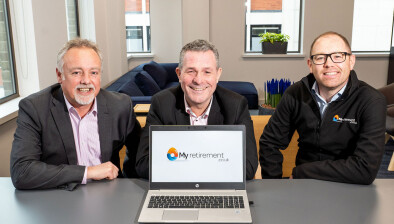Justin Rourke: Required retirement income rises by up to 34% – how much will you need to retire?

Justin Rourke
In light of the significant rise in the expected level of income needed for retirement, Armstrong Watson Financial Planning’s head of advice, Justin Rourke, highlights the impacting factors and discusses what one should consider to achieve their retirement objectives.
The expected level of income needed in retirement has risen sharply with new research from the Pensions and Lifetime Savings Association (PLSA) revealing increases to its Retirement Living Standards for all retirement lifestyles.
The PLSA’s Retirement Living Standards have been developed as a guide to help people plan and save the required amount for their desired standard of living in retirement at three levels – minimum, moderate and comfortable.
For a Moderate retirement lifestyle for a single person, the income need has risen by 34% since the last data 12 months ago.
| PSLA Retirement Living Standards | SINGLE
| COUPLE
| ||||
| 2024 level of income | previous level | % Increase | 2024 level of income | previous level | % Increase | |
| Minimum | £14,400 | £12,800 | 13% | £22,400 | £19,000 | 18% |
| Moderate | £31,300 | £23,300 | 34% | £43,100 | £34,000 | 27% |
| Comfortable | £43,100 | £37,300 | 16% | £59,000 | £54,500 | 8% |
PSLA: Updated figures (excluding London) February 2024
PSLA says a shift in the increasing importance people place on spending time with family and friends outside of the home, and increases to the cost of living have largely impacted the levels of retirement income.
This news comes after a year of rising inflation and interest rates which has often seen savers prioritise short term needs over long term retirement planning.
The State Pension triple lock has also provided people with peace of mind. The recent increase of 8.5% will see the State Pension exceed £11,500 per annum for a number of people.
However, this still falls short of the minimum suggested income need, and the State Pension will not always fall in line with our own individual retirement aspirations, often we will wish to retire sooner than 67 or 68.
What can you do?
The good news is that for many there is still time to take control of your retirement planning.
Workplace pension schemes (through automatic enrolment) have largely been a success with high numbers of employees remaining opted in and benefiting from both employee and employer pension contributions. A number of employers offer above minimum contribution levels and many schemes tend to offer good value and a range of investment options.
Personal pensions have also benefited from a number of positive legislation changes over the last 12-18 months.
- Annual Input Allowance increased to £60,000 (subject to earned income).
- Money Purchase Annual Allowance increased to £10,000.
- Tapered threshold increased to £260,000 for high earners.
- Lifetime allowance tax charge was abolished.
Additionally, there is access to advice irrespective of whether you have a personal pension, are a member of a workplace pension or don’t yet have one.
Cash flow modelling is a powerful tool to allow you to see the ways of meeting your retirement objectives, and, when used in regular annual reviews, allows you to make adjustments as required.

Justin Rourke is financial planning director – head of advice at Armstrong Watson Financial Planning







